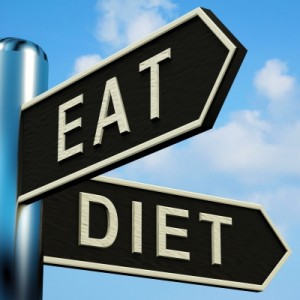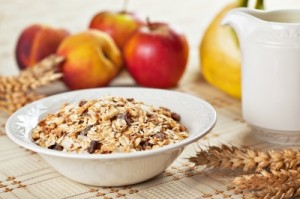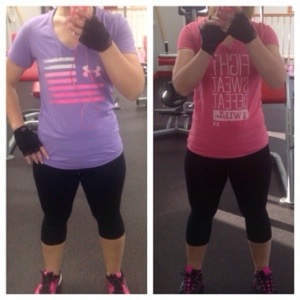With the onset of your cut, it’s important to remember that it is just another phase of your fitness journey. Another step along a journey of many steps. As fat starts to shed it may be tempting to stay in this phase for the fat loss benefits. But rest assured, you’ll find that over time if you cut too long or too deep, it will work against you rather than in your favor. So, what to do? Cue the diet break.
As the name suggests, a diet break is just that, a break from your diet and a return to maintenance or eating at TDEE. Diet breaks can come in several forms, from simply a cheat meal or a refeed day to a full diet break which can last for a couple of weeks.
During your cut phase, cals are adjusted slightly below TDEE with a 5-15% deficit. When cals are reduced, your metabolic rate slows to accommodate the decreased intake. Similarly when fat loss or weight loss occurs, your metabolic rate can also be impacted. This slowing of the metabolic rate can, in turn, slow your fat loss. Quite the vicious cycle, I know. To add further insult to injury, if you stay too long in a deficit, your body will start to adjust and think your deficit is actually your new maintenance. When fat loss stalls you may instinctively want to decrease calories further, however, this could potentially do more harm than good. By taking a diet break, you help return your metabolic rate to normal as well as your hormone levels, all of which will aid the fat loss process once you return to eating at cut. Additionally, a diet break can also serve as a psychological break if you struggle with sticking with your plan.
WHEN TO TAKE A DIET BREAK
Diet breaks should be planned anywhere from 4-12 weeks of your cut phase and should last for 1-2 weeks. If you have a vacation, special occasion or even a stressful time ahead, this would be the perfect time to write a diet break into your schedule. After all, if you’re vacationing you’ll probably want to kick back, loosen up the diet strings a bit and enjoy a little indulgence. Why fight it? The same can be said for times of stress. Scheduling a diet break might lessen the load slightly.
As already mentioned, a diet break is a return to maintenance calorie intake. If you’ve adjusted your macros during your cut, you’ll want to return these to maintenance levels as well. Carbs are generally the most manipulated macro during cut, so be sure to bring this back to normal. As usual, your protein shouldn’t change much and should be at least 1g/lb bodyweight. Although cut phases should never be overly restrictive, if you are cutting back on any foods or macro groups, this is a great time for a comeback! Now, a diet break should not be confused with a free for all or an excuse to visit your local all-you-can-eat buffet. Stick to your maintenance cals and macros and you’ll do fine.
BONUS
Interestingly you may find that as you increase your cals for your diet break you may experience a whoosh or drop on the scale. This whooshing affect may be the result of water being released from fat cells which previously stored fat. You may also find that during your cut phase you weren’t able to perform as well with some lifts due to the reduced cals and possibly lower carbs. If that was the case, you should find your strength return to normal during the diet break and return to maintenance cals and macros.
There are many reasons to incorporate planned diet breaks into your nutrition plan. From a physiological perspective, the full diet break is recommended as it allows your body to return to normal levels, which in turn can aid your fat loss efforts. From a psychological perspective, it’s just nice to return to maintenance eating for a little while. With that said, it is strongly recommended for anyone doing a cut phase to include a full diet break at least every 12 weeks, if not more frequently, into your plan. While it seems counter-intuitive, trust that it will work in your favor in the long run.
Photo credit: stuart miles, Serge Bertasias Photography, stockimages
Discover more from Eat More 2 Weigh Less
Subscribe to get the latest posts sent to your email.










Wow! My mind is blown. I can’t believe how much misinformation I’ve believed, and then I’ve been mad at myself when my starvation didn’t work!
once i’m ready to go on a diet break, do i just start eating at my maintenance cals jump right into it or gradually increase back to it (sort of reverse diet)? thanks
Hey Leah! If you’ve stayed at a reasonable deficit (i.e. 15%) you can jump right back to TDEE. Any weight gain, and there may be none, should adjust back down.
Thank you so much for this!
You’re always welcome, Sarah! ;)
Thanks for reading!
~Kiki